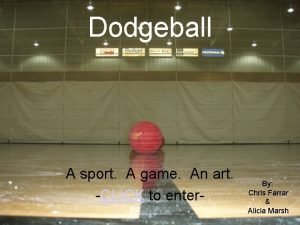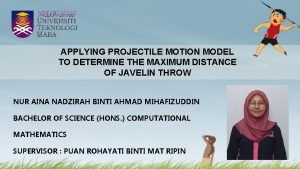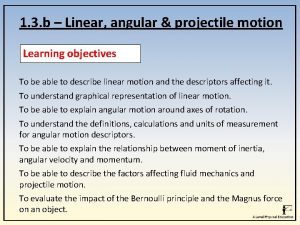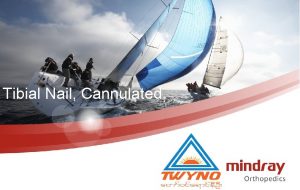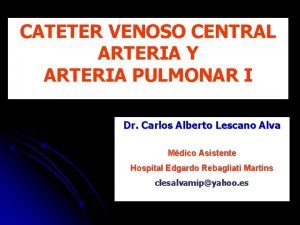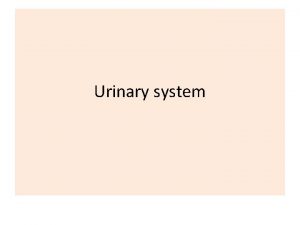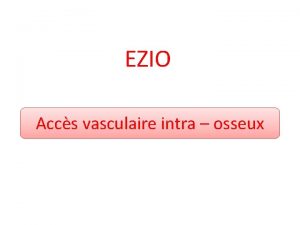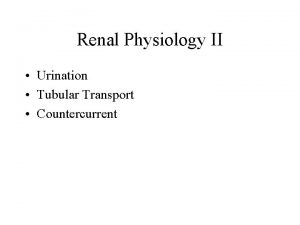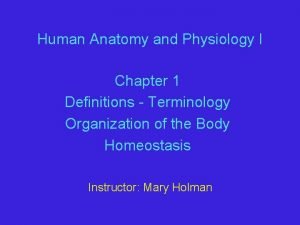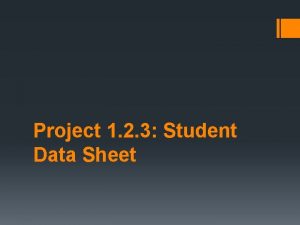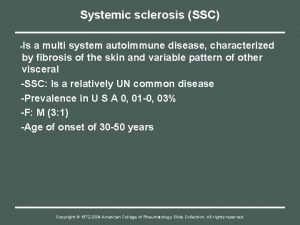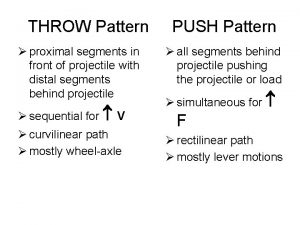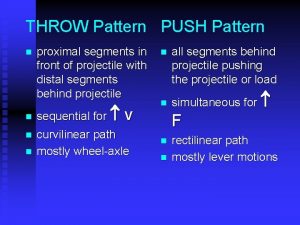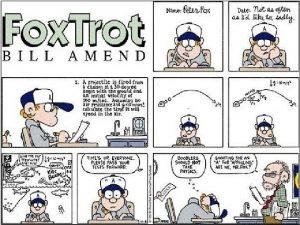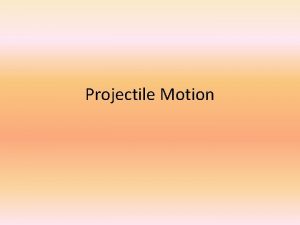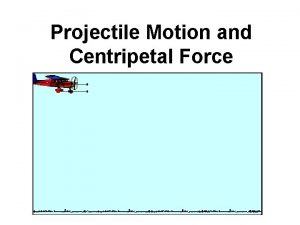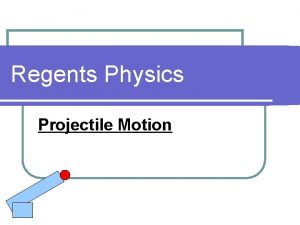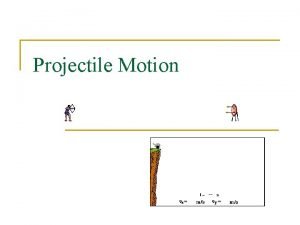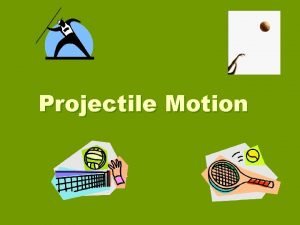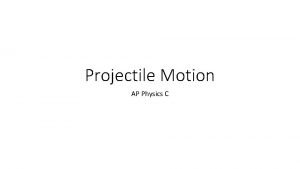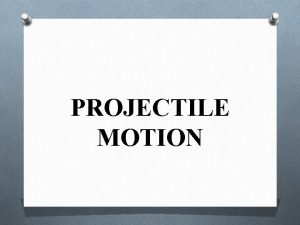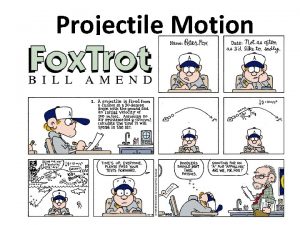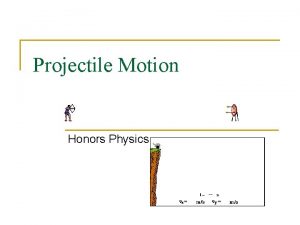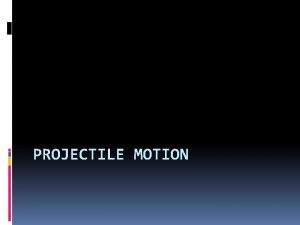THROW Pattern proximal segments in front of projectile

















- Slides: 17

THROW Pattern ü proximal segments in front of projectile with distal segments behind projectile ü sequential for v ü curvilinear path ü mostly wheel-axle PUSH Pattern ü all segments behind pushing the projectile or ahead pulling the load ü simultaneous for F ü rectilinear path ü mostly lever motions

Preparation Phase 1. Rotate torso so that contra lateral shoulder faces target 2. Step forward with contra lateral leg

Hips Rotate while upper torso and arm lag behind

1. HIPS are “stopped” while upper torso and shoulders continue to rotate 2. Upper torso and shoulders are “stopped” once they are aligned with hips/lower torso

Wheel-Axle: medial rotation of the shoulder

Wheel-Axle: pronation during release phase

v=r r is increased about both longitudinal axis of torso via elbow extension

Release Point is beside torso not in front of torso

Mechanical Purposes of PUSH • 1. • 2. • 3.

Push Pattern for Force Activities Ø maximum strength movements demand simultaneous segmental rotations Ø move in a rectilinear path Ø minimize acceleration in movements to avoid injury and to comply with Force/Velocity principle

PUSH Pattern: Power Activities ü Power movements require both F and v ü moving a resistance fast requires higher % F max ü rapid acceleration in a short period of time ü strength-dominant P (e. g. shot putting) ü speed-dominant P (e. g. jump, start, strike, throw)

Power in Jumping • PUSH body into space via segmental rotations • large F required to achieve maximum vertical or maximum horizontal distance • takeoff of a jump for maximum Distance. VERT : body’s C of G has high VVERT + moderate VHORZ • takeoff of a jump for maximum Distance. HORZ : body’s C of G has high VVERT + high VHORZ

Jumping: Motions Sequence 1. Massive segments/trunk @ “open” end of chain 2. Small segments/feet @ “closed/fixed” end 3. ideal direction of F is through body’s CG 4. initial shoulder flexion exerts downward F 5. stopping shld. flexion initiates trunk extension 6. Shld. flexion + trunk extension loads legs 7. Loading of leg muscles increases ROM and elicits elastic recoil in hip + knee extensors

Jumping: Motions Sequence 1. Massive segments/trunk @ “open” end of chain 2. Small segments/feet @ “closed/fixed” end 3. ideal direction of F is through body’s C of G 4. initial shoulder flexion exerts downward F 5. stopping shld. flexion initiates trunk extension 6. Shld. flexion + trunk extension loads legs 7. Loading of leg muscles increases ROM and elicits elastic recoil in hip + knee extensors

Punch/Strike: Power/Accuracy ØF + v + accuracy important in punch or strike Ø Throw/Push Continuum involved in Punch/Strike Øv is initiated and increased using the kinetic link and a curvilinear path v = r ØF and accuracy is achieved by changing to a rectilinear path near the end of the ROM, just prior to contact/impact

Accuracy & Accuracy with v ü Consistency in movements key to success ü straight line motion just prior to, during, and just after release/impact ü rectilinear path for projecting for short distance ü curvilinear then a “flat space” to a rectilinear path just prior to and during release/impact

curvilinear path then a “flat space” to a rectilinear path just prior to and during release/impact
 Dodgeball
Dodgeball Projectile motion javelin throw
Projectile motion javelin throw Projectile motion in gymnastics
Projectile motion in gymnastics Contents page magazine
Contents page magazine Dead front vs live front transformer
Dead front vs live front transformer Warm front
Warm front Distal proximal
Distal proximal Acceso yugular posterior
Acceso yugular posterior Renal system
Renal system Tibia accs
Tibia accs Amino acid reabsorption in proximal tubule
Amino acid reabsorption in proximal tubule Coaptation splint humerus
Coaptation splint humerus Medial lateral distal proximal
Medial lateral distal proximal Principal cells vs intercalated cells
Principal cells vs intercalated cells Epicondilite
Epicondilite Nasal silling/guttering skull
Nasal silling/guttering skull Scleroderma esophagus
Scleroderma esophagus Benzaquen
Benzaquen
